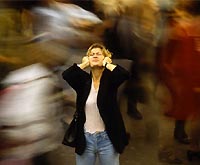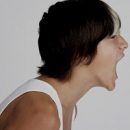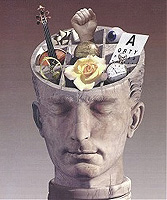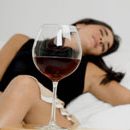Obsessive thoughts, constant repetition of unnecessary rituals and the impossibility of abandoning them, fear, anxiety - all these signs of obsessive compulsive disorder capable of turning a person's life to hell. Read more about the manifestations of the disease in the article.
Content
Unbearable heavy thoughts growing anxiety, constant excitement, obsessive desire from time to time to perform certain actions to distract from such thoughts - maybe these symptoms you noticed or your loved ones. For example, frequent washing of hands, opening and closing doors - these are the most common signs of obsessive-compulsive disorder, chronic and very difficult violation, characterized by obsessive ideas, rationals and obsession.
Ossessive compulsive disorder and women
Ossessive-compulsive disorder is striking people regardless of gender. However, women's symptoms of obsessive-compulsive disorder are first manifested over the age of 20 years, and men slightly earlier - already in 6-15 years old. Moreover, in close relatives of patients the likelihood of the development of obsessive-compulsive disorder above average. In such cases, symptoms are manifested at the age of 18-30.
Symptoms of obsessive-compulsive disorder are intensified in women during pregnancy and after delivery. Unstable levels of hormones, anxiety, fears and fears associated with pregnancy and maternity can lead to an increase in the level of anxiety, which, in turn, causes a deterioration in obsessive compulsive disorder.
Manifestations of obsessive compulsive disorder
 In principle, there is nothing abnormal in obsessive ideas and a small obsession - they are peculiar to everyone. From time to time we all feel alarming and fear. However, in most cases, anxiety disappears with the cause, its causing (for example, the cause of an alarm may be an important event). A person has a desire for perfection, for which he is ready to perform many small and not always pleasant tasks. Such behavior should not be perceived as a sign of obsessive-compulsive disorder.
In principle, there is nothing abnormal in obsessive ideas and a small obsession - they are peculiar to everyone. From time to time we all feel alarming and fear. However, in most cases, anxiety disappears with the cause, its causing (for example, the cause of an alarm may be an important event). A person has a desire for perfection, for which he is ready to perform many small and not always pleasant tasks. Such behavior should not be perceived as a sign of obsessive-compulsive disorder.
The difference between normal behavior and obsessive-compulsive disorder in the intensity and the number of similar experiences. First of all, the disorder is characterized by an abnormally high level of anxiety, which prevents person to fulfill everyday affairs and communicate, takes time and energy.
In the imagination of patients with obsessive-compulsive disorder, paintings or obsessive impulses (obsessions) are constantly arising, forcing them to repeat certain actions in order to get rid of the feeling of anxiety. Most obsessive-compulsive disorder patients understand that their obsessive ideas and mania are completely groundless and are not connected with reality. Nevertheless, they are powerless to cope with their obsession, can not control themselves.
The most common obsessive ideas are:
- Pathological fear of pollution (dirt, infections)
- Constantly emerging doubts (whether the apartment is closed, whether water or gas is turned off)
- Pathological accuracy
- Constant fears and fear cause harm to yourself or others
- Uncontrollable and unworthy anger or manifestation of cruelty to others
- Doubtful doubts in their own faith and morality
- The need for constant confirmation of a good attitude towards them
- Increased attention to certain sounds, symbols, words or numbers
The reaction to an obsessive idea can serve as the following actions:
- Frequent washing hands
- Permanent check, whether gas and water is turned off
- Pedantical observance of all the rules of hygiene and maintaining an ideal order.
- Location of items in a strictly defined order.
- Appeal to the surrounding support for support.
- Collecting old newspapers, mail and unnecessary empty boxes
- Repetition of words, phrases or decision in the mind of mathematical examples
- Frequent execution of certain actions: Exit the room, squats and so on.
Treatment of obsessive compulsive disorder
In the absence of treatment, the obsessive compulsive disorder can lead to the collapse of the person's personal and social life. People suffering from this disorder can not lead a normal lifestyle. Medical treatment with antidepressants and behavioral therapy effectively applied to the treatment of obsessive-compulsive disorder. In addition to antidepressants, other drugs are used, but in very rare cases. With the support of relatives and acquaintances, the improvement is noticeable after a few weeks after the start of treatment.









